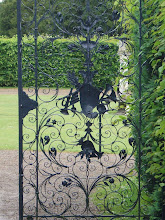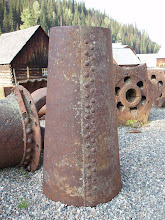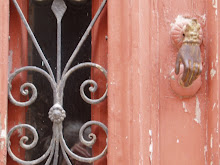Some people may think that the life of an artist is an easy one, not real work perhaps. But it is the life that I have chosen so I thought I would write about a typical day in my studio.
As my job is mostly sedentary I always feel better if I get some exercise first thing, for me it is the best way to start the day. So at 8am I get outside and go for a run, three seasons of the year, in winter I cross-country ski and when the weather is bad for either I go to the gym. By the time I get home, shower, change, make a cup of tea and get into the studio it is usually exactly 10am. I put on the radio, CBC, and start listening to Q, my favourite program.
Usually I have something that I am half-way through on the work bench. It could be a custom piece, maybe a wedding ring with a gemstone, or I could be making inventory for my online shop or one of the galleries I sell my work in. My activities could be one of many, such as cutting, texturing, forming metal, setting a stone, soldering and joining metal, finishing and polishing. Or maybe I'm using up scrap metal, melting and pouring an ingot or drawing out wire to different thicknesses. I mostly make everything myself that goes into my jewellery, rarely buying ready-made components. This is because if I make it myself I can put my own style in it, if I buy it, it will be the same as everyone elses.
I break for lunch at noon and always take an hour to eat and relax. Then it is back to the studio. I'll spend the afternoon doing the same range of things trying to get ahead with several pieces, or completely finishing one piece, depending if it is custom work or not. If I am enamelling I'll set the kiln to heat up while I am having lunch, then I'll clean all the work bench of metal, tools and dust and get the enamels ready for use. I usually work through until 5 or 6 pm, it varies depending on workload and whether I or my husband is cooking dinner tonight. I'm sure other jewellers work longer hours but I do what is right for me. I put all my tools away at the end of the day, cover the rolling mill and let the hydraulic press down, turn off the torch and the pickle pot.
Of course some days are different, there is book-keeping every month and running to the post office with shipments of jewellery to mail. And don't forget designing, sketching, photographing, making prototypes, pricing, and ordering materials. Meeting clients for custom work is a favourite part of my job, but it can be time-consuming if it turns into a social occasion. After dinner I usually spend an hour or two on the computer catching up on work-related email, sorting out jewellery photos, checking jewellery organization newsletters, making applications for various things - juried shows, grants and other opportunities that crop up.
I do this five days a week, well sometimes it is four and other times six,at busy times (Christmas) seven. Of course I can organize my schedule how I want which is great but I do have to be disciplined or it would all fall apart. I take a bit of extra time off when I get busy in my garden or if the powder is especially good in winter, but this has been my routine for ten years and it works for me. If there are other artists out there I would love to hear about your daily routine too.






























